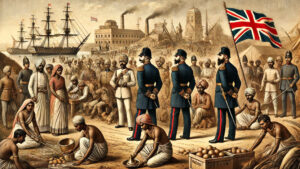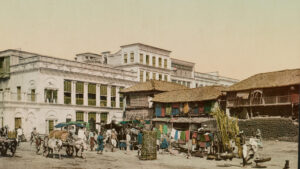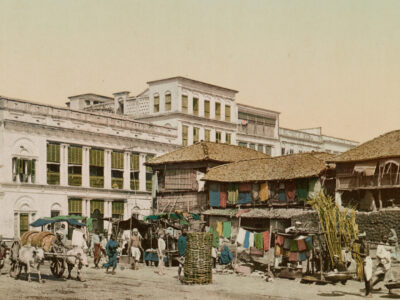The British colonial administration profoundly restructured India’s social and economic landscape, transforming it into England’s political and economic capital. The imposition of structural unity can be traced to the administrative reforms and infrastructure developments initiated during the British Raj.
Administrative and Legal Reforms
The British introduced a centralized administration, a radical departure from India’s previous governance structures. This move not only unified India under a single political entity for the first time in its history but also laid the foundation for a modern administrative system. The implementation of the Indian Civil Service and the codification of laws, which replaced diverse local practices with uniform regulations, were pivotal in this transformation. The decision to use the English language as the medium of administration and education further solidified British control and facilitated communication across diverse regions.
Economic Policies and Infrastructure Development
The economic policies imposed by the British were not just about governance, but also about serving their industrial interests. India was systematically transformed into a supplier of raw materials and a consumer of British manufactured goods, a strategy that significantly impacted India’s economy. The construction of extensive railway networks, roads, and telegraph systems was primarily aimed at facilitating the extraction and transportation of resources. Railways, for instance, connected ports with the hinterlands, enabling the efficient movement of goods to Britain while also opening up Indian markets to British products.
The introduction of railways had a profound impact on Indian society. It broke down regional and caste barriers by promoting mobility and interaction among people from different backgrounds. The improvement in communication infrastructure, including the telegraph and postal systems, further fostered a sense of unity among Indians, which later contributed to nationalism.
Impact of New Capitalism on Indigenous People and Society
The advent of new capitalism under British rule devastated India’s indigenous economy and society. Traditional industries, such as textiles, declined severely due to competition from British manufactured goods. The deindustrialization process led to widespread unemployment and poverty among artisans and craftsmen, who had previously thrived in a vibrant local economy.
Agricultural Transformation and Exploitation
Agriculture, the backbone of the Indian economy, was also subjected to exploitative policies. The British introduced cash crops like cotton, indigo, and opium, which were more profitable for the colonial rulers but detrimental to local food security. The shift from subsistence farming to cash crop cultivation made Indian peasants vulnerable to market fluctuations and famine.
The land revenue system was another tool of exploitation. The Permanent Settlement of 1793 and the Ryotwari and Mahalwari systems imposed heavy taxes on land, often fixed regardless of agricultural productivity. This led to widespread indebtedness among farmers, many of whom lost their lands to moneylenders and were reduced to tenant farmers or labourers.
Social Disintegration and Cultural Impact
Economic exploitation was paralleled by social disintegration. The British promoted a ‘divide and rule policy,’ exacerbating existing divisions within Indian society and fostering religious and caste-based divisions to prevent unified resistance against colonial rule.
Western education and legal reforms also had a dual impact. While they introduced progressive ideas and social reforms, such as the abolition of Sati and child marriage, they also eroded traditional social structures and norms. The introduction of English education created a new class of Western-educated Indians who were often alienated from their cultural roots but played a crucial role in the later stages of India’s independence movement.
The British colonial rule in India was marked by a deliberate restructuring of its social and economic fabric to serve imperial interests. The imposition of administrative and legal unity and the exploitation of economic resources transformed India into a political and economic appendage of England. The new capitalist economy introduced by the British disintegrated traditional industries and agriculture, leading to widespread social and economic upheaval. Despite these challenges, the structural unity imposed by the British also inadvertently sowed the seeds of Indian nationalism, which ultimately played a pivotal role in the country’s struggle for independence.
For more insights, refer to:
- The Economic History of India, 1857-1947 (3rd edition) by Tirthankar Roy
- A History of Economic Policy in India by Rahul De








